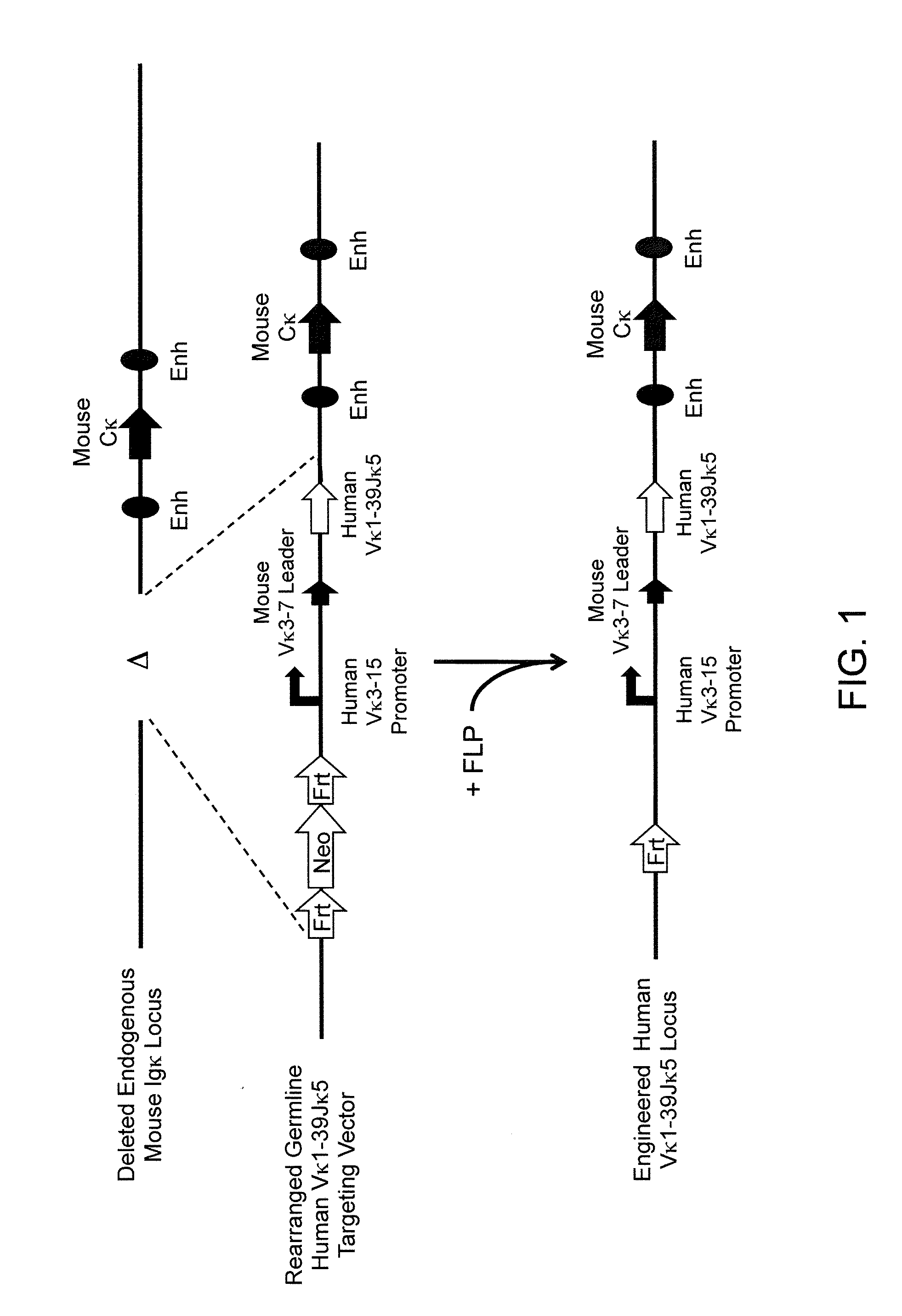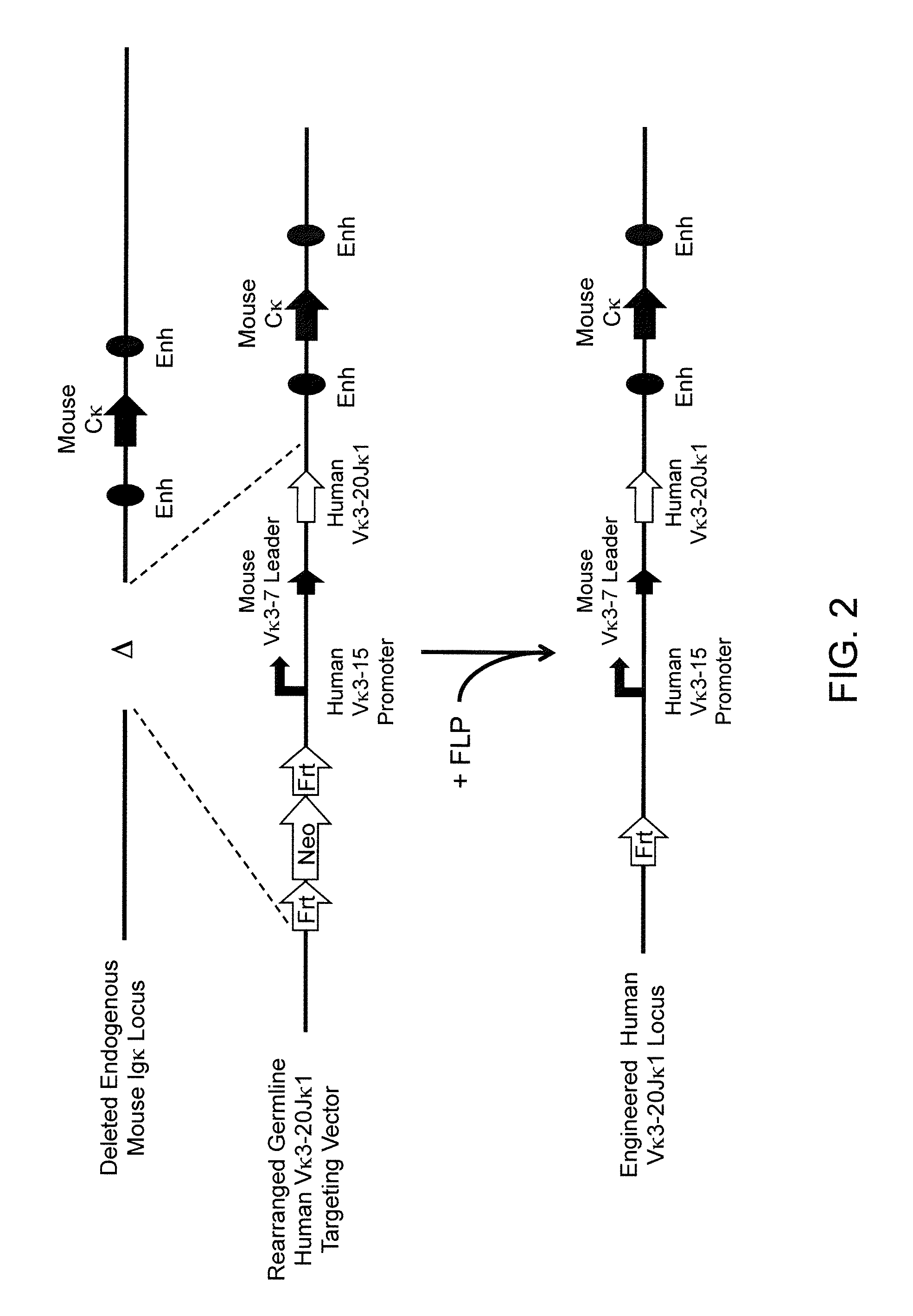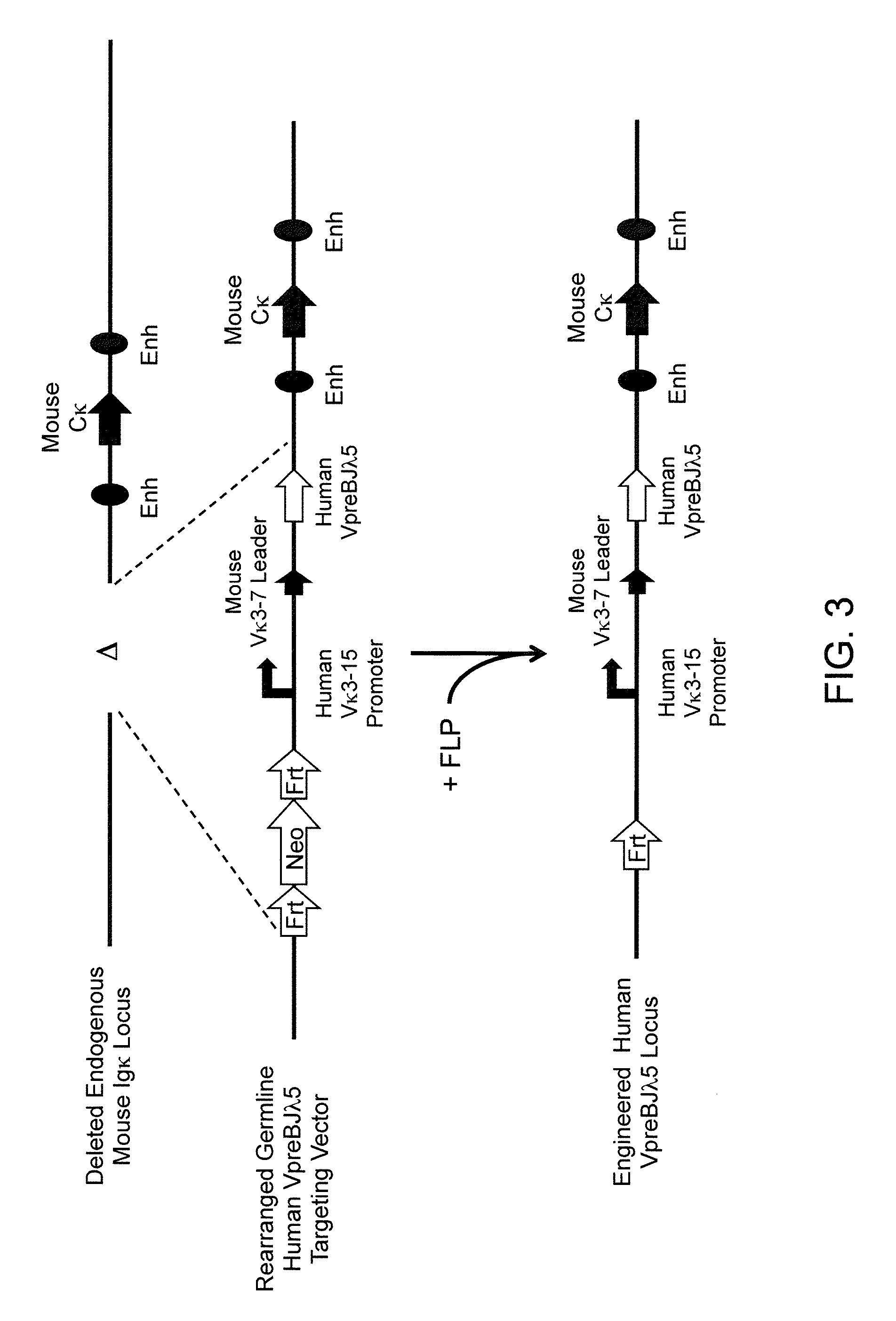Methods For Making Fully Human Bispecific Antibodies Using A Common Light Chain
a technology of bispecific antibodies and light chains, which is applied in the direction of fluorescence/phosphorescence, instruments, peptides, etc., can solve the problems of bispecific antibodies having a suitable light chain component that can satisfactorily associate with each of the heavy chains of bispecific antibodies, and achieves enhanced methods for making bispecific antibodies, reduces the number of inappropriate species, and promotes stable interaction
- Summary
- Abstract
- Description
- Claims
- Application Information
AI Technical Summary
Benefits of technology
Problems solved by technology
Method used
Image
Examples
example 1
Identification of Human VH Regions that Associate with Selected Human VL Regions
[0237]An in vitro expression system was constructed to determine if a single rearranged human germline light chain could be co-expressed with human heavy chains from antigen specific human antibodies.
[0238]Methods for generating human antibodies in genetically modified mice are known (see e.g., U.S. Pat. No. 6,596,541, Regeneron Pharmaceuticals, VELOCIMMUNE®). The VELOCIMMUNE® technology involves generation of a genetically modified mouse having a genome comprising human heavy and light chain variable regions operably linked to endogenous mouse constant region loci such that the mouse produces an antibody comprising a human variable region and a mouse constant region in response to antigenic stimulation. The DNA encoding the variable regions of the heavy and light chains of the antibodies produced from a VELOCIMMUNE® mouse are fully human. Initially, high affinity chimeric antibodies are isolated having ...
example 2
Generation of a Rearranged Human Germline Light Chain Locus
[0242]Various rearranged human germline light chain targeting vectors were made using VELOCIGENE® technology (see, e.g., U.S. Pat. No. 6,586,251 and Valenzuela et al. (2003) High-throughput engineering of the mouse genome coupled with high-resolution expression analysis, Nature Biotech. 21(6): 652-659) to modify mouse genomic Bacterial Artificial Chromosome (BAC) clones 302g12 and 254m04 (Invitrogen). Using these two BAC clones, genomic constructs were engineered to contain a single rearranged human germline light chain region and inserted into an endogenous κ light chain locus that was previously modified to delete the endogenous κ variable and joining gene segments.
[0243]Construction of Rearranged Human Germline Light Chain Targeting Vectors.
[0244]Three different rearranged human germline light chain regions were made using standard molecular biology techniques recognized in the art. The human variable gene segments used f...
example 3
Generation of Mice Expressing a Single Rearranged Human Light Chain
[0262]Targeted ES cells described above were used as donor ES cells and introduced into an 8-cell stage mouse embryo by the VELOCIMOUSE® method (see, e.g., U.S. Pat. No. 7,294,754 and Poueymirou et al. (2007) F0 generation mice that are essentially fully derived from the donor gene-targeted ES cells allowing immediate phenotypic analyses Nature Biotech. 25(1): 91-99. VELOCIMICE® independently bearing an engineered human germline Vκ1-39Jκ5 light chain region, a Vκ3-20Jκ1 light chain region or a VpreBJλ5 light chain region are identified by genotyping using a modification of allele assay (Valenzuela et al., supra) that detects the presence of the unique rearranged human germline light chain region.
[0263]Pups are genotyped and a pup heterozygous or homozygous for the unique rearranged human germline light chain region are selected for characterizing expression of the rearranged human germline light chain region.
[0264]Fl...
PUM
| Property | Measurement | Unit |
|---|---|---|
| Capacitance | aaaaa | aaaaa |
| Capacitance | aaaaa | aaaaa |
| Light | aaaaa | aaaaa |
Abstract
Description
Claims
Application Information
 Login to View More
Login to View More - R&D
- Intellectual Property
- Life Sciences
- Materials
- Tech Scout
- Unparalleled Data Quality
- Higher Quality Content
- 60% Fewer Hallucinations
Browse by: Latest US Patents, China's latest patents, Technical Efficacy Thesaurus, Application Domain, Technology Topic, Popular Technical Reports.
© 2025 PatSnap. All rights reserved.Legal|Privacy policy|Modern Slavery Act Transparency Statement|Sitemap|About US| Contact US: help@patsnap.com



